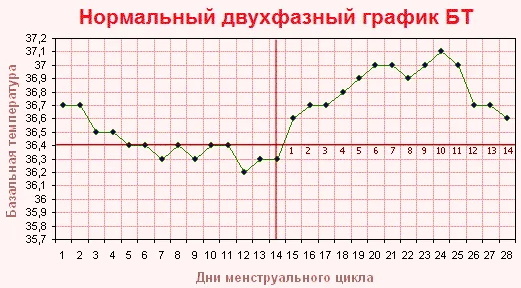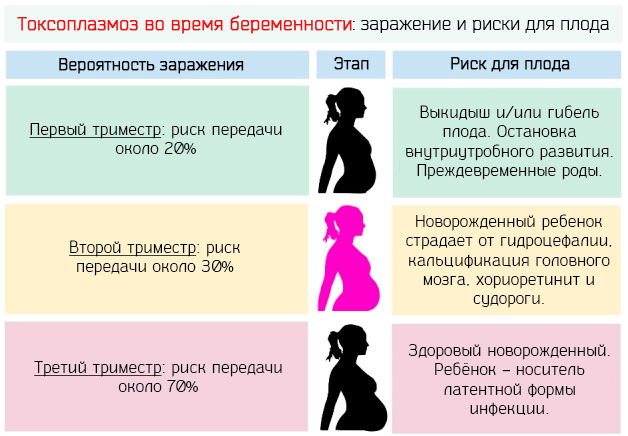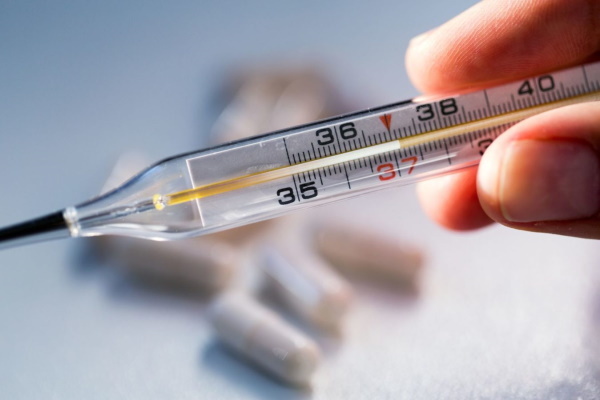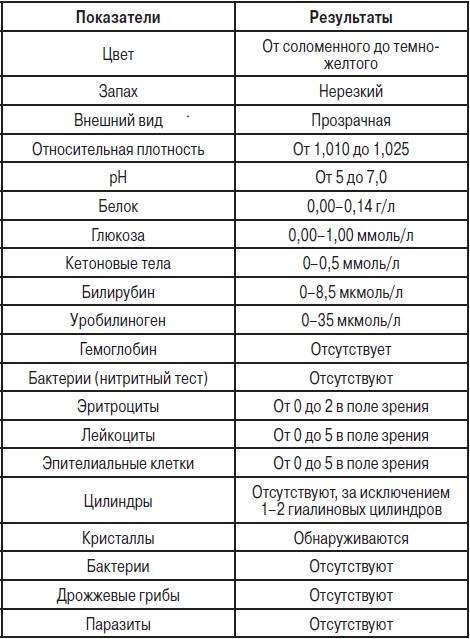Temperature 37 in some cases rises without any signs of illness. If this indicator is kept constantly, then it is called asymptomatic subfebrile condition. In medical practice, this is one of the most difficult cases. It is impossible to establish the cause in women and men without a thorough diagnosis.
Record content:
- 1 The main symptoms
- 2 Temperature 37 without symptoms - danger or normal?
- 3 When to see a specialist
-
4 Causes of 37 temperature without symptoms in women
- 4.1 Stressful situations and emotional upheavals
- 4.2 Increased physical activity
- 4.3 Influence of the environment
- 4.4 Food provocateurs
- 4.5 Hormonal adjustment
- 4.6 Viral diseases
- 4.7 Toxoplasmosis
- 4.8 Weakening of the immune system
- 4.9 Oncology
- 4.10 Medicinal subfebrile condition
- 5 Do I need to take antipyretics?
- 6 What to do if a temperature of 37 is constantly kept without symptoms?
- 7 Situations requiring medical attention
- 8 Prophylaxis
- 9 Temperature video 37
The main symptoms
The main signs of subfebrile condition include:
- fever and sweating;
- clouding of consciousness;
- discomfort in the nasal mucous membranes, accompanied by dryness and a feeling of cramps;
- asthenia.
The set of symptoms depends on the cause that provoked the temperature. For some, the rise in the indicator is noted in the evening, for others - in the daytime. Some people complain of a constantly elevated temperature. A long process contributes to the weakening of the body.
Temperature 37 without symptoms - danger or normal?
If you rely on medical sources, then the temperature itself is 37.0 ° C is considered the norm.
For an ordinary person, the indicator is optimal under the following conditions:
- morning awakening;
- taking a hearty meal;
- playing sports;
- overheat;
- great excitement.
Normally, the temperature fluctuation during the day is 1 ° C. But such leaps are short-lived. They do not cause discomfort to a person.
You should be wary when the indicators increase from 37.10 ° C to 38.0 ° C, which lasts for 2 weeks or longer. Subfebrile condition can be an individual feature of the female body. Often the trait is genetic in nature. The condition does not require elimination if it does not cause concern.
When to see a specialist
You should contact a specialist in the following cases:
- the indicator is not habitual for the body in a state of complete health;
- the duration of the temperature rise is 2 weeks or more;
- adherence of other symptoms is observed.
Subfebrile condition is a clear marker of pathological processes in the body. It is provoked by diseases of internal organs, hormonal failure, stressful situations. People often lead a normal life, not paying attention to the sign. But it can serve as a symptom for serious pathology.
Causes of 37 temperature without symptoms in women
A constant temperature of 37 (the reasons for women may be different) in some cases is provoked by a failure of the hormonal background, a change in lifestyle, a violation of the emotional sphere. Many of the fairer sex, seeing a slightly increased value on the thermometer, can provoke a rise in temperature by suggestion.
In some cases, a subfebrile indicator signals natural physiological and pathological causes. It is important to know which diseases require a specialist consultation and immediate therapy.
Stressful situations and emotional upheavals
A constant temperature of 37 in women is often kept in stressful situations. Emotion is inherent in the fairer sex. Inner experiences are inherent in turbulence. Even if outwardly this does not manifest itself in any way, then a flurry of emotions can rage in the soul.
Instability of the emotional sphere causes an increase in body temperature. It should be noted that emotional experiences are not always negative. Joyful life events can also cause violent reactions.
If the subfebrile temperature rises against the background of a stressful situation, then usually this symptom is accompanied by asthenia, apathy, fatigue, low mood and loss of appetite. The value of the thermometer returns to normal when the cause of the experience is eliminated and the state of the nervous system stabilizes.
Increased physical activity
Physical loads and an active lifestyle are always associated with the release of energy. If the expenditure of the reserve of strength is too high, then the body is overworked, which provokes a rise in temperature to a subfebrile value.
Among the female sex, wraps have gained particular popularity, which are made in order to get rid of excess weight and give the body an ideal look.
If a woman wraps herself and in addition applies ointments and creams with a warming effect, then the body temperature will certainly rise. This reaction is normal. As soon as the procedures or physical training stop, the temperature will return to normal.
Influence of the environment
A constant temperature of 37 (the reasons in women may not be associated with diseases) appears as a result of:
- visiting a bath or sauna;
- sun exposure;
- effects on the body of heating devices.
Such a reaction of the body is physiological in nature and does not pose a health hazard. A timely response to the symptom is important. If a woman takes a tan and feels that the body temperature has risen, then the procedure should be interrupted and the body should be cooled a little.
When visiting a bath or sauna, you should not forget about the drinking regime. Water intake should be plentiful. Drinking helps to cool the body.
Food provocateurs
Spicy and spicy food helps to speed up metabolism and lose weight. Many representatives of the fairer sex, in pursuit of beauty, consume such food. For some, this diet is due to taste preference. Spicy food can cause the temperature to rise.
Hormonal adjustment
The absence of additional symptoms signals that there are no failures in the body. The physiological increase in the temperature index in women can be attributed to the imbalance of the hormonal background.

In the first phase of the menstrual cycle, the temperature is usually kept at natural levels and may even drop. Ovulation triggers the release of progesterone. Marker 37.0 ° C or 37.1 0 ° C is normal for the second phase of menstruation
If conception occurs during ovulation, then the level of progesterone will increase. In this case, there may be a disorder of the stool, a feeling of nausea and drowsiness. All this provokes the pregnancy hormone.
An increase in temperature to 37.5 0 ° С during this period is considered normal. With the formation of the placenta and the termination of the functionality of the corpus luteum, the state of the body is normalized.
Viral diseases
One of the most common causes of fever in a woman is a viral infection. The pathogen provokes an active response of the immune system. Subfebrile temperature is an indicator that the body has begun to actively fight and is trying to destroy the source of the disease.
During this period, no additional symptoms are noted. Symptoms appear when the immune system fails immediately. It is not advised to lower the temperature, as the body will cease to fight. Only a specialist can establish the exact cause.
Toxoplasmosis
A constant temperature of 37 (the reasons in women are caused by physiological and infectious provocateurs) is kept with toxoplasmosis. Often, the disease proceeds without visible signs, with the exception of low-grade fever.

Often, it infects owners of domestic animals, especially cats, which are the main carrier. Therefore, if a woman has a cat at home and a subfebrile temperature is constantly noted, then this is an alarming sign.
Also, the disease is transmitted through insufficiently fried meat. To diagnose pathology, a blood test is required. The temperature with toxoplasmosis does not go astray even after taking antipyretic drugs.
Weakening of the immune system
In some cases, subfebrile temperature serves as an indicator of the general weakness of the body after an infectious pathology. Many types of ARI contribute to weakening the immune system and bring the body into a state of mobilization.
If the causative agents of the disease are not completely suppressed by the body, then the temperature can remain at a subfebrile level for several weeks. This phenomenon is called the temperature tail. On the one hand, the phenomenon is considered quite understandable, but on the other hand, it serves as a sign of a weakened immunity and the need to take measures to strengthen it.
Oncology
A temperature of 37 ° С -37.2 ° С without certain symptoms can be an indicator of an oncological process. The tumor can be benign or malignant. Independent determination of the localization site is impossible, since neoplasms can develop in the internal organs: the digestive system, the urogenital area, and even in the blood.
Such benign processes as uterine myoma, ovarian cyst are often characterized by a prolonged increase in temperature to 37.5 0 ° C without concomitant manifestations.
Medicinal subfebrile condition
A constant temperature of 37 (the reasons in women are established after a thorough diagnosis) is kept when using certain groups of drugs.
Typically, Eutirox, Ampicillin, Lincomycin, Penicillin, antipsychotics, antidepressants, anti-parkinson drugs, antihistamines and narcotic drugs for pain relief have this effect. To eliminate the increase in temperature, all drugs are canceled or replaced.
Do I need to take antipyretics?
If the subfebrile temperature persists for several days, then the condition requires immediate consultation with a doctor who can establish the root cause. It is forbidden to use antipyretic drugs. They are impractical because they interfere with the body's fight against infection and lubricate the blade of pathology.
In case of intoxication, an abundant warm drink is recommended. You can use water, juices, fruit drinks, fruit drinks, herbal teas. Food should be rich in vitamins and easy to digest. It is advised to limit physical activity. With general weakness, it is recommended to stay in bed.
What to do if a temperature of 37 is constantly kept without symptoms?
It is necessary to remain calm, as a stressful situation affects the state of the immune system negatively. Often, low-grade fever is evidence of temporary problems. Many viral diseases proceed without vivid symptoms. It is possible to identify the exact cause only during examination.
With a constant preservation of the temperature, you should seek the advice of a therapist. He will collect anamnesis, prescribe the necessary diagnostic procedures. Their list can be extensive, since there are many provocateurs of changes in body temperature.
It is a good idea to consult a dentist, as pathologies of the oral cavity can also cause the temperature to rise to a subfebrile level and not be painful.
Situations requiring medical attention
Treatment of a symptom that has become chronic is carried out if a pathological process is observed.
The following diagnostic procedures are usually prescribed:
- blood test (biochemical, for sugar and allergens);
- urine analysis (general, according to Nechiporenko, according to Zimnitsky);

- analysis of feces (to determine helminthic invasion);
- vaginal smear (for bacterial flora, for hidden infections);
- Ultrasound of the abdominal cavity, pelvic organs, heart, thyroid vessels;
- visiting specialists of a narrow profile;
- blood test for HIV;
- a blood test for hepatitis A or B;
- radiography of the nasal appendages;
- respiratory system radiography;
- a blood test for hormones;
- ECG.
The therapy is carried out on an individual basis, depending on the results. The table shows the tactics of treatment for diseases of various etiologies.
| Disease | Therapeutic methods |
| Bacterial infections | It is supposed to use antibiotics, a complex of vitamins and physiotherapy. If the subfebrile temperature is provoked by sluggish processes, then long courses of taking drugs are needed, selected depending on the pathogenic flora. For example, with tuberculosis, 3 or 4 specific drugs are combined for 8-12 months. |
| Viral diseases | Eliminated by means of immunity modulators and antiviral drugs, but usually the body copes with the infection itself. Compliance with a certain regime is required. In some cases, etiotropic drugs are used. They are used for viral hepatitis, which is accompanied by low-grade fever. They contribute to the suppression of the reproduction of the pathogen and reduce the load of the virus on the body. For respiratory and intestinal diseases, they are not prescribed. |
| Systemic pathologies | require individual therapy. Hormonal drugs are often prescribed. Estrogen drugs are prescribed for women during menopause. They are able to eliminate the negative effects of hot flashes, low-grade fever. All manifestations after taking drugs disappear. Contraceptives with a combined composition have a good therapeutic effect. They are used for severe premenstrual syndrome. Sedatives are also prescribed. |
| Cancer lesions |
 With oncological lesions, cytostatic agents are indicated. They are used in combination therapy in parallel with radiation treatment. The drugs are indicated for severe autoimmune processes that are resistant to corticosteroid therapy. With oncological lesions, cytostatic agents are indicated. They are used in combination therapy in parallel with radiation treatment. The drugs are indicated for severe autoimmune processes that are resistant to corticosteroid therapy. |
Vitamins are indicated for general strengthening of the body. Usually they resort to the use of ascorbic acid and B vitamins. Tocopherol and retinol are beneficial. With a general depletion of the body, it is recommended to take metabolic agents that provide the body with energy.
In severe viral and bacterial infections, infusion solutions are used. For the purpose of detoxification, intravenous infusions of colloidal and crystalloid solutions are carried out. To prevent the formation of cerebral edema, the appointment of diuretics is indicated.
Low-grade fever, which manifests itself in parallel with bloody feces with inflammation of the intestines, requires surgical intervention. Excision of ulcers or bowel resection with the formation of an anastomosis is performed. Radical lymphadenectomy is performed for an oncological process in the area of lymphoid tissue after active chemotherapy.
Prophylaxis
If the pathology is not diagnosed, then the woman should pay attention to the general condition of the body.
In order to bring the thermoregulation process back to normal, you need:
- timely therapy of infectious foci;
- avoidance of stressful situations;
- elimination of bad habits;
- observance of the regime of work and rest;
- full rash;
- regular exercise;
- hardening;
- walks in the open air.
All of the above methods help to strengthen the immune system, normalize the heat exchange process.
It should be remembered that the temperature of 37 in women is constantly kept in case of serious illnesses. Sometimes it serves as their only sign, which is fixed at the initial stages of pathology. In addition to an increase in temperature, the disease may not manifest itself in any way, which poses a serious threat to the body. Therefore, timely identification of the causes is important.
Temperature video 37
Malysheva about a temperature of 37:



